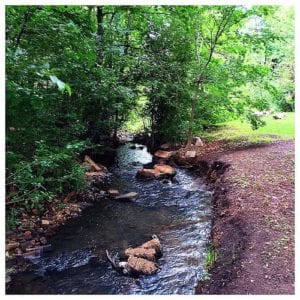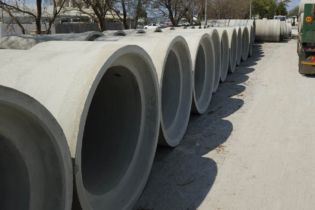
The Braamfontein Spruit – the longest river in Johannesburg – will undergo a substantial rehabilitation, following interventions by the Johannesburg Roads Agency
The JRA, responsible for road and stormwater infrastructure in the City, has commissioned a study on the state of the Spruit and the steps required to improve the natural habitat and surrounding infrastructure.
Mpho Kau, the Acting Managing Director the JRA says the City shares the concerns of residents about the environmental degradation along the Braamfontein Spruit and the implications for safety and public health.
Rapid urbanisation close to the banks has had a choking effect on the river, deprived it of its natural flow path and reduced its capacity.
This often result in the Spruit overflowing its banks, especially after heavy downpours, causing damage to properties and safety hazards for people who are using roads and low-lying bridges in the vicinity.
“The study will, no doubt, lead to far-reaching recommendations and actions by the JRA to restore the habitat and the measures required to combat future erosion and degradation,” he says.
Overcoming urbanisation
The Braamfontein Spruit is the most important waterway in Johannesburg, originating in Parktown, and, eventually, joining the Jukskei River, which is a tributary of the Limpopo River system.
Within the City it runs through suburbs such as Greenside, Hurlingham, Sandton and Paulshof. It forms part of an important catchment area in the City and some of the major parkland areas, recreational spots and hiking trails in Johannesburg are located close to its banks.
Kau says “The JRA is aware that urbanisation in close vicinity to the Spruit has had an impact on safety and water quality. Urbanisation concentrates runoff, which increases the energy of the stream thereby causing instability.
“The global warming and associated change in weather patterns has resulted in more frequent and sporadic rainfall patterns. This increases the loss of valuable topsoil and the flushing of the urban pollutants (both organic and inorganic material) and debris which blocks the drainage network causes additional concerns.”
Taking action
A specialist engineering company has been appointed to determine the required recommendations on remediation measures.
The study will take into account various environmental considerations to identify the sources of the problem and propose actions the City can take to restore the habitat and introduce further safety measures.
The City will then convene public consultation meeting as part of the environmental authorisation application requirement.
The public will have an opportunity to submit additional environmental concerns as part of a stakeholder engagements process before the rehabilitation of the river can begin.
Kau concluded “The JRA has identified the rehabilitation of the Braamfontein Spruit as a priority project and it is confident that the experience gained during the study and the subsequent interventions will serve as an example for future action in other catchment areas and river systems experiencing similar challenges.
–
Jobrug.org.za








